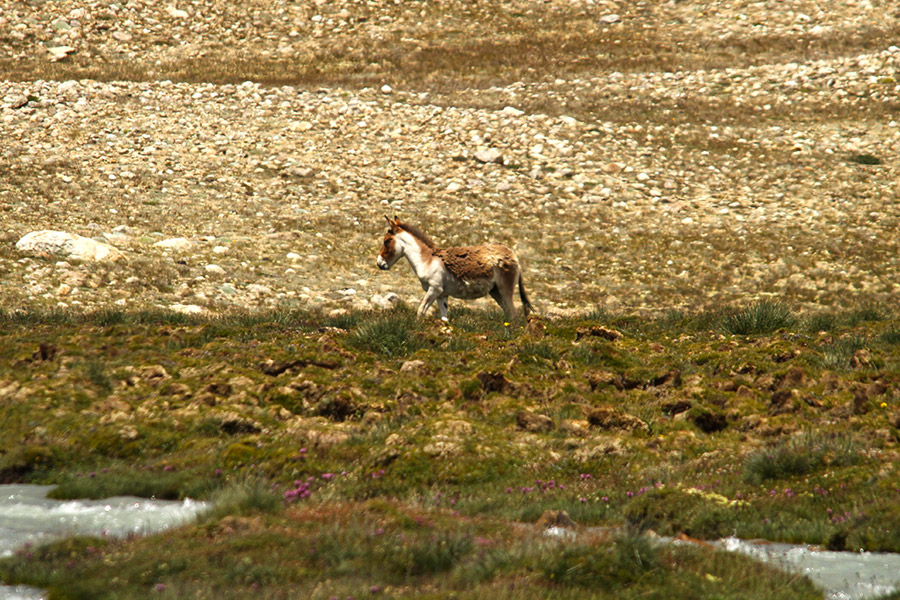
The Southern Kiang (Equus kiang polyodon, Hodgson 1847) occurs in the Trans-Himalayan open steppe of North Sikkim within the Indian limits. It has been recorded in Chho Lhamu, Chulung Valley, Gyamchhona, Kerang and Yumchho. The Souhern Kiangs move between India and China through the passes like Bamcho La, Chhulung La and Sesse La (Avasthe & Jha 1999). It differs from the Western Kiang (E.k.kiang) that occurs in Ladakh from being smaller and sporting a lighter coat. During summer it ranges between high altitude pastures to valley bottoms, while in winter it is found in the valley bottoms only.
During my recent visit to North Sikkim we had the opportunity to observe a pair grazing on the grassy pastures on the way to Gurudongmar (Gurudogmar) lake from Thangu on 30.07.2014 at 1300 hrs. The pair appeared to be quite wary of humans and retreated on approach.
The kiang population in Sikkim was recently thought to be extinct (Duncan 1992). However, two surveys conducted in 1994 and 1995 in north Sikkim confirmed their continued existence in a 200 sq km area close to the Indo-Tibetan border, at an altitude between 5,100 m and 5,400 m (Shah 1994, 1997). The largest herd of kiang (n=48; foals were seen, but not counted) was observed across the border, west of Bamcho La (Shah 1994). In 1994, the Sikkim Kiang population was estimated at 74–120 individuals (Shah 1994). This area has no protected status as it comes under army jurisdiction (Shah 1994, 1997). Courtesy IUCN.

 CI is a non-profit, non-commercial portal that aims to facilitate wildlife and nature conservation by providing reliable information and the tools needed to campaign effectively.
CI is a non-profit, non-commercial portal that aims to facilitate wildlife and nature conservation by providing reliable information and the tools needed to campaign effectively.
Chosen as 'Picture of the Week'
The kiang population in Sikkim was recently thought to be extinct. However, two surveys conducted in 1994 and 1995 in north Sikkim confirmed their continued existence in a 200 sq km area close to the Indo-Tibetan border, at an altitude between 5,100 m and 5,400 m.